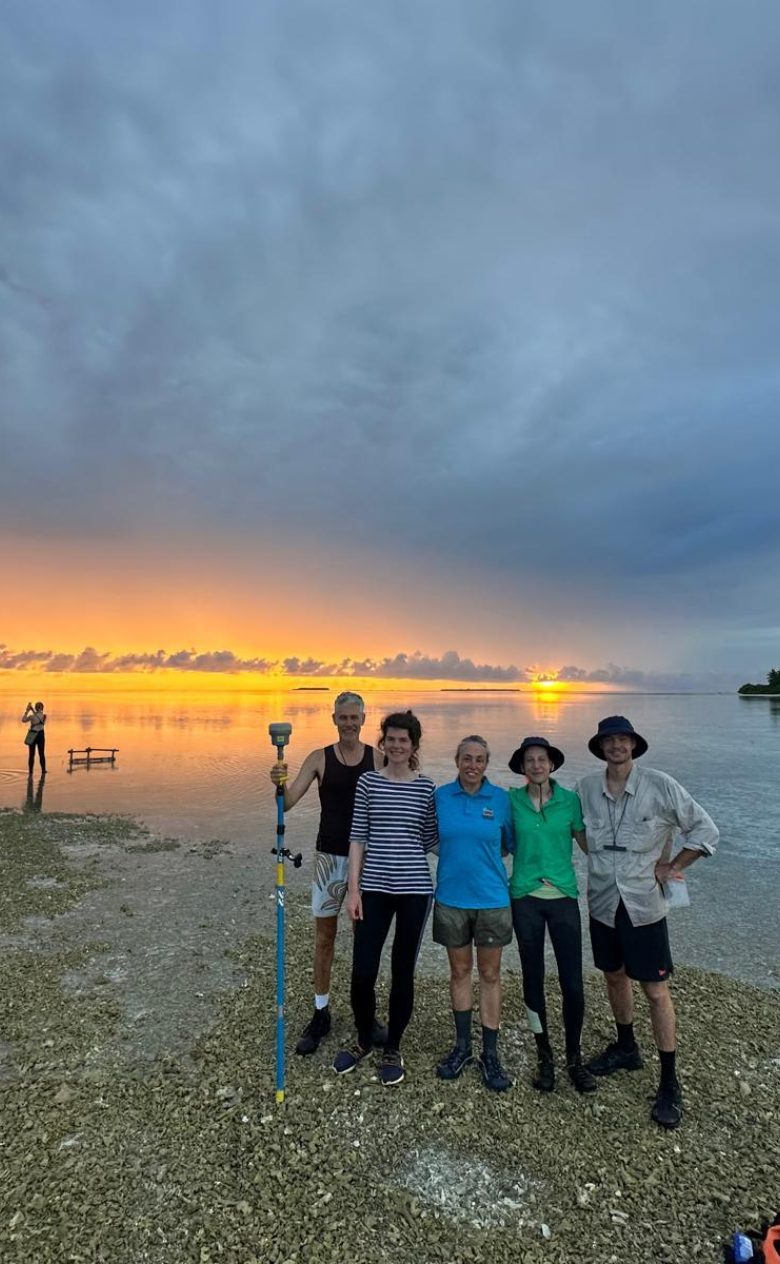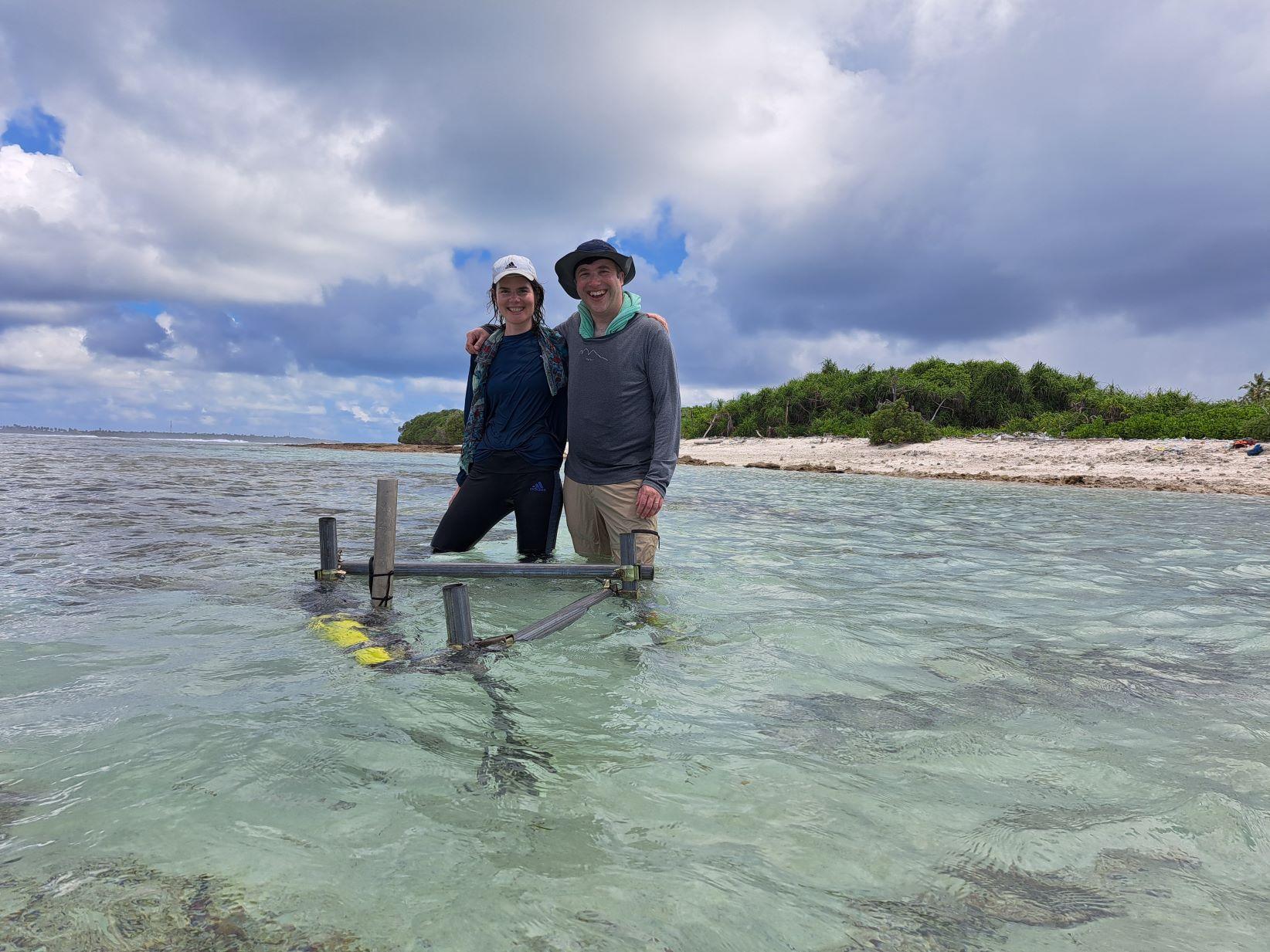What is the impact of sea level rise on atoll islands?
A team of international researchers is investigating the potential for the world's low-lying coral atoll islands to withstand predicted sea level rises through natural flooding processes. Last month, Deltares experts Robert McCall and Floortje Roelvink joined the international research team for fieldwork in the Maldives. They collected data to support predictions of how these islands might respond to future sea level changes.

ARISE
The research is done within the larger project ARISE. ARISE is led by the University of Plymouth and is a project of £2.8 million, lasting five years and funded by UK Research and Innovation’s Horizon Europe Guarantee programme. The overall aim of ARISE is to revolutionise the capability to model the physical impacts of sea-level rise on atoll islands to aid in the formulation, development and implementation of transformative climate change adaptation strategies. Numerical models that will be used include Deltares software XBeach, Delft3D-FM, and SFINCS.
Field campaign
During last month’s research campaign, the research team installed over 80 instruments, collected more than 200 sediment samples, conducted extensive topobathy lidar and multibeam surveys, and deployed drifters. The team deployed tide and groundwater sensors, wave gauges, current meters, suspended sediment sensors, cameras, LiDAR, and a weather station on the island of Dighelaabadhoo.
To support these in-situ oceanographic measurements, drones and unmanned boats were used to survey the island and reef platform morphology and bathymetry. Geophysical techniques were used to investigate the subsurface geology and hydrology of the island. Hundreds of sediment samples were collected to characterise the different depositional environments and provide insights into the age and provenance of the sediments. The research results are expected to be published next year.
This project is a unique opportunity to collect an extensive, open-access field and laboratory dataset to improve and validate our numerical models and apply them to this unique coral island environment
Floortje Roelvink, small island expert at Deltares

Delta Flume tests
Next month, the ARISE project will continue with over two months of testing in the Deltares Delta Flume. In these tests we will explore how islands morphologically respond under different hydrodynamic forcings. The concrete reef platform has already been constructed and over the next weeks, a wide range of instruments will be installed and the sandy island placed.
The experiments are scheduled to run from June 14th to August 19th. We will start with a series of runup tests (the island will be covered with geotextile and raised) with and without artificial reef elements. We will then remove the geotextile and investigate morphological tipping points as well as the response of the island to slowly rising water levels. The Delta Flume experiments will form the core dataset for model calibration and validation of reef island morphodynamics.
Through a TKI proposal led by the TU Delft, Deltares is also involved in the design and analysis of the artificial reef elements.
Atoll islands
Atoll islands are wave-built accumulations of gravel or sand that sit on top of coral reef platforms. The island sediments are derived from the breakdown of calcium-carbonate secreting organisms, such as corals, bivalves, gastropods and foraminifera, that dwell on the adjacent reef systems.
The existence of these islands is intrinsically linked to the reef ecology, as they rely on the reef’s production of sediments; however, the formation, maintenance and dynamics of atoll islands are primarily governed by physical processes involving water level, waves and currents.


